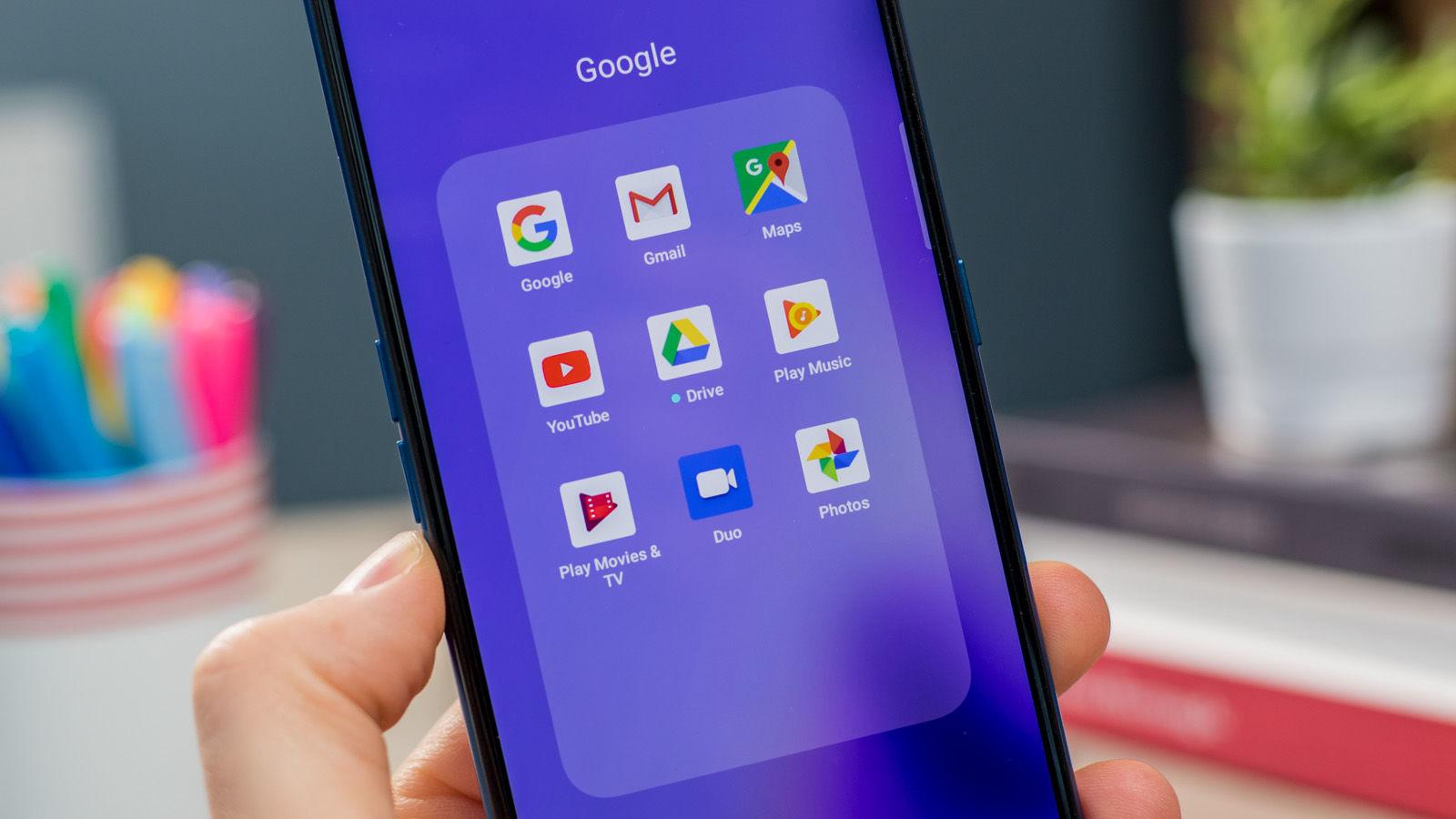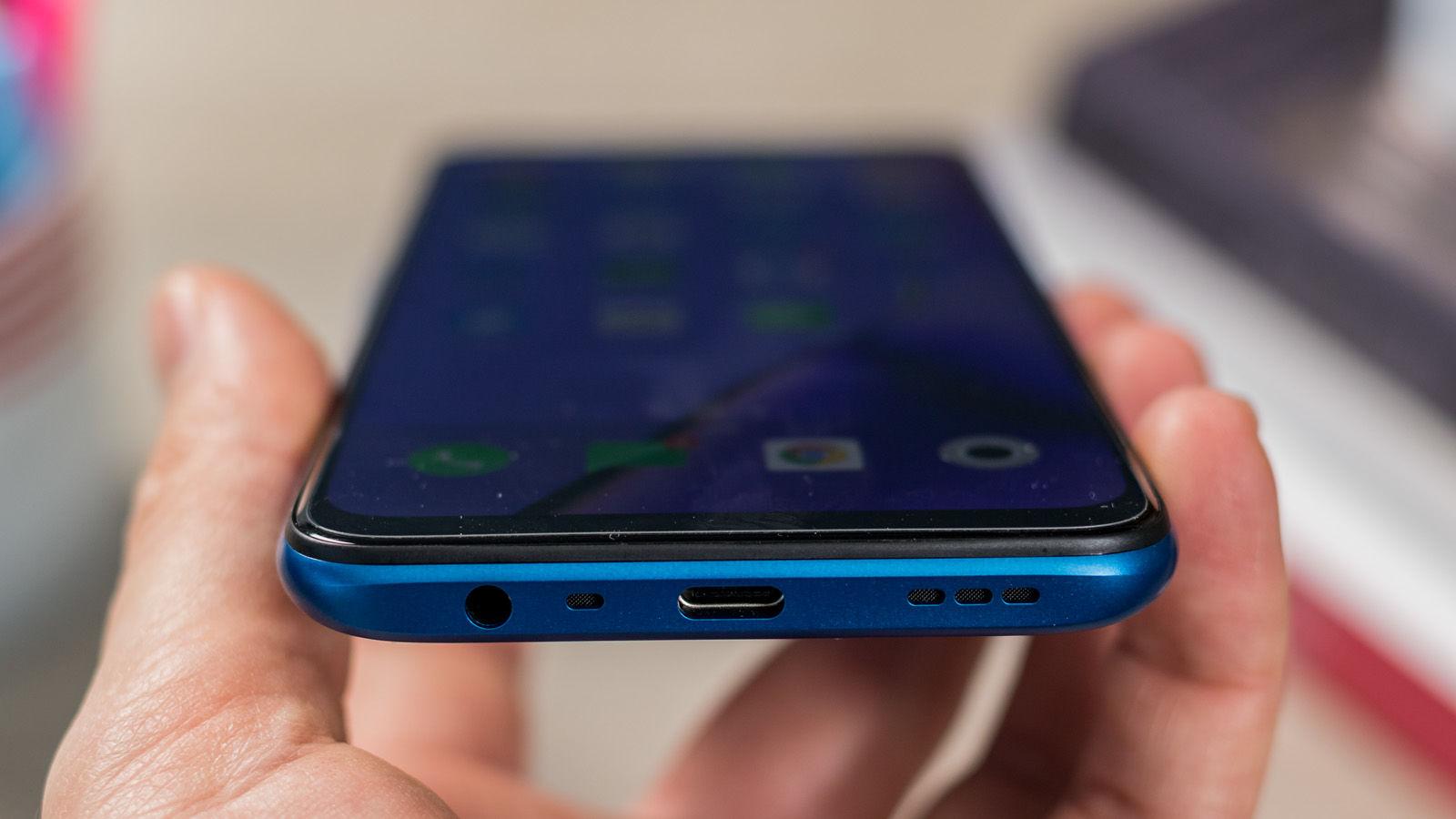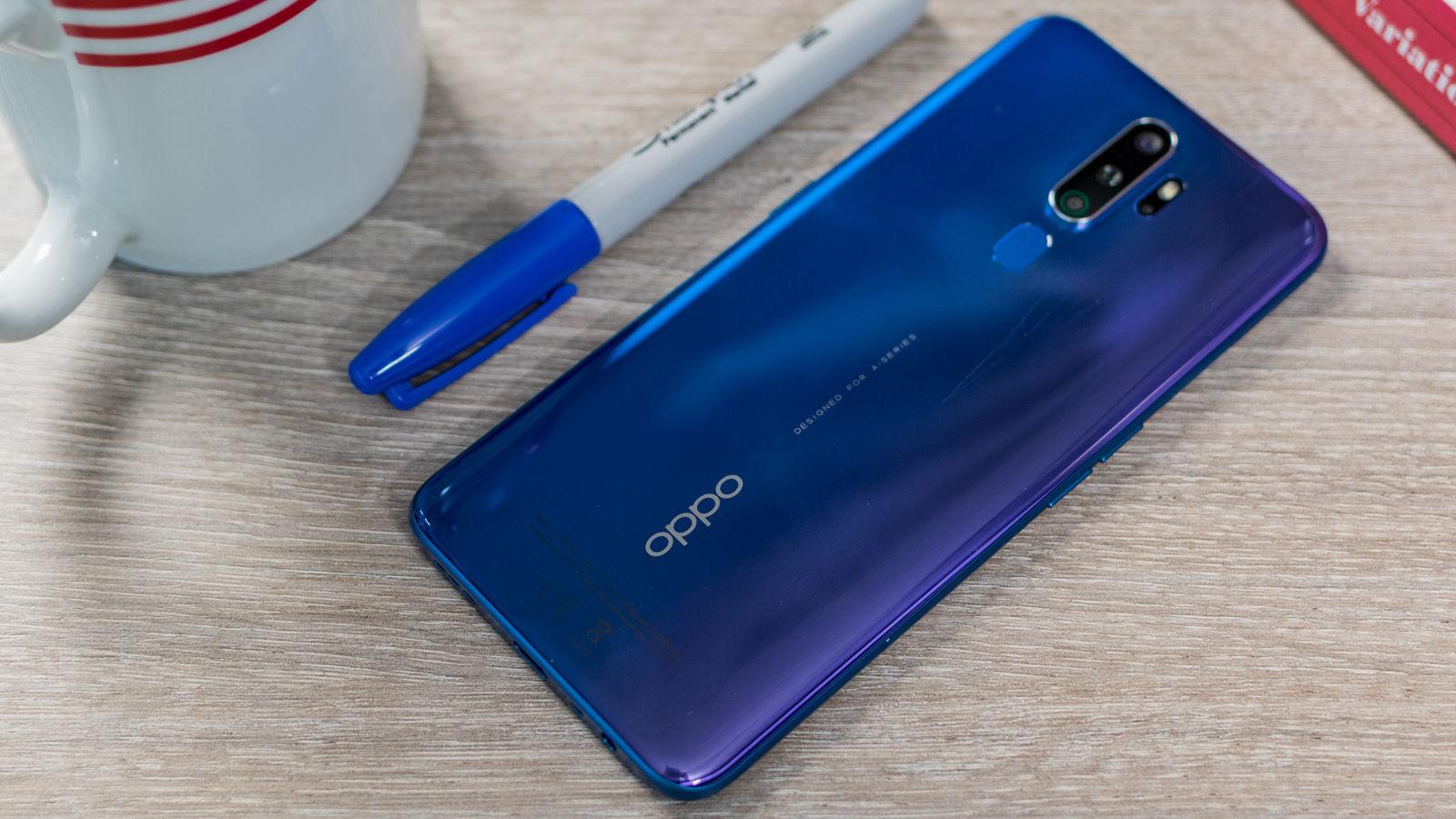It’s not completely perfect but the downsides cannot outweigh the performance that this phone delivers for such a reasonable price. If you’d like to know what else you can get for a similar price, then take a look at our list of the best budget smartphones.
Price and availability
In the UK, the A9 2020 is currently retailing for £219.99 (approximately US$285 for just the handset) and you can buy it from Carphone Warehouse, Currys and Mobiles.co.uk. You can also get it on contract from a variety of carriers: iD Mobile, EE, O2 and Vodafone. The cheapest starts at £12.99 per month at the time of writing. The Oppo A9 isn’t available in the US, as Oppo doesn’t usually sell across the pond, but if you are happy with an imported phone, you may be able to purchase it from selected retailers. This is a really good price for the kit you’re getting. The closest phone in terms of cost would be the Huawei P30 Lite but the Oppo comes with a much better battery and less laggy performance overall. Even some more expensive options, like the Honor 9X, don’t offer as good a camera experience when it comes to night mode and video – so we’re impressed.
Design and build
Oppo has become synonymous with the ombre colour effect found on its phones and the A9 is no different, with a glossy back that blends sapphire blue and violet together seamlessly. The back of the phone looks like glass but is in fact plastic. Whilst this does seem like a shame, the phone still looks and feels high-end, so it’s not a huge compromise. However, because it’s so reflective, it falls victim to picking up lots of fingerprints. As stated, we tested out the blue/purple variant but you can also get the A9 2020 in a green colourway, where the gradient is slightly more subtle. It boasts curved edges, plus metal volume and lock screen/power keys. I found the latter to be a little frustrating; taking unwanted screenshots or just generally struggling to turn the phone off quickly. You can unlock the phone using either the rear fingerprint scanner, facial recognition or standard password unlock. The phone actually comes fitted with a screen protector, which is added so well that it’s barely noticeable and will save you a few pennies on buying your own. The bargain price does mean that this phone is not water-resistant but this is typically something really only seen on higher-end phones, anyway. There’s also no wireless charging. At 163.6 x 75.6 x 9.1mm, this is quite a large phone, although those familiar with Oppo will know that such a trait is characteristic of the brand. The A9 won’t fit in smaller pockets and I personally can’t use it one-handed easily, however, it’s a great phone for watching videos on. At 195 grams, it’s not too heavy in comparison to some other larger phones on the market too. The Oppo A9 has a microUSB port, dual-SIM support, a 3.5mm headphone jack and stereo speakers with Dolby Atmos sound. The latter works quite well when listening to audio out loud; bringing depth to the sound quality and not having that ‘tinny’ feel that lots of other mobile speakers unfortunately suffer from.
Spec and features
Running on a Qualcomm Snapdragon 665 processor, the Oppo A9 is swift to everyday tasks and seldom encounters issues with apps crashing or being slow. It runs on Android 9 (Pie) with a layered ColorOS 6.1 interface on top. As Android skins go, this is a clean and smooth user experience with no major hiccups. If the phone does get an update to Android 10 (which is already available on other devices), it’ll likely have to wait in line behind the company’s flagships. If the traditional homepage layout isn’t doing it for you, you can turn on ‘Smart Assistant’, which means you have a homepage with wider widgets on display, plus the ability to pick your favourite ones and customise the layout. This is useful if you have specific information you’d like to see – like your step count, for example. It also comes with 4GB of RAM and 128GB of internal storage – enough to keep a wide bank of photos, apps and games. Of course, if you need more, there’s a microSD slot, which can handle up to 256GB of extra storage. For connectivity, the Oppo A9 comes complete with Bluetooth 5.0, GPS and Wi-Fi 802.11 a/b/g/n/ac. For playing games, there’s a Game Space app which is designed to optimise performance when playing heavy-duty titles. I personally found it hard to see the difference when turning this feature on – I still had a wait for what felt like the same amount of time for games to load, whether the feature was on or off. The same was also true of battery drain and gameplay fluidity. Looking at our internal benchmark testing, the A9 2020 sits with the likes of the Huawei P30 Lite and the Pixel 3a, performing reasonably well on most tests. Take a look at our full results below:
Display
If you’re after an uninterrupted display, then the Oppo A9 will not be suitable to your needs, as the screen features a waterdrop notch. However, I would argue that this is hardly an intrusion on the viewing-experience, as there’s still an 82.5% screen-to-body ratio. The phone comes with dynamic pixel adjustment, which claims to be able to allow the user to read text even under strong sunlight. Personally, I only found this to be true when I whacked up the brightness to full, myself. In low light, the display was easy to view, even on the lowest setting. You can also opt for a warmer screen that cancels out blue light for less eye-strain, both permanently or on a timer. The A9 has a resolution of 1600 x 720 pixels – which isn’t the best, as lots of rivals offer 1080p Full HD panels.
Cameras
Though the quad-camera is the marketed highlight of the A9, not all of the sensors at play are particularly useful. The 48MP module is the star of the show, bringing in the crisp, detailed images. Like most smartphone cameras it performs best under natural daylight; capturing colour depth and contrast really well. Night mode is pushed as one of the phone’s biggest talking points and it’s easy to see why. Everything is lifted into clear detail and the phone manages to keep the image sharp (even with my shaky hands) too. The shooting time is slightly longer than normal but it’s worth it for the crisp outcome of the images. As there’s no optical or hybrid zoom system at play details becomes extremely blurred and fuzzy the more you crop in, though. Of course, zoom isn’t a primary feature on the A9, but don’t expect that just because it’s got a high-quality main camera that its talents apply to all areas of photography. You can choose to turn on optional modes like Dazzle Color and HDR but I found the former overexposes colours quite a lot, giving some photos a very unnatural look.
You can also choose from a number of pre-made filters, as well as a separate black-and-white creative option. Personally, I find these all to be a bit gimmicky and would just prefer to edit photos in post-production but that does come down to user preference. Meanwhile, the 8MP camera is the wide-angle option, with generous room for fitting in what you may want in bigger scenes. It is easy to see the drop in quality that this lens has in comparison to that main sensor, but for big travel-style shots, it’ll certainly come in handy when needed. You can still use HDR mode on wide-angle, although there’s no major difference in the resultant images. The camera setup experience does prove slightly confusing. Some options are menu-accessible, others are swipeable, and the rest are clickable at the top of the viewfinder. It’ll likely take a while for most users to get used to this layout, and personally I prefer having everything in one place for easy access. The other two cameras are both 2MP offerings and they’re allegedly meant to help with portrait and black-and-white shooting, respectively. Personally, it was hard to tell exactly what they were both adding, and seemed almost like Oppo wanted a quad-camera for the sake of saying that it had one. The front-facing 16MP snapper performs competently enough in daylight, still managing to capture textures well. That said, some details can become blown out under direct sunlight and the portrait mode comes off a little too strong on the blurriness side, making it seem like you’re standing in front of a green screen. It’s also not great in low light, which is a shame considering the powerful night mode on the main camera. Capturing video is extremely impressive on the A9, offering 4K Ultra HD recording. Considering that some rivals only offer up to 1080p capture – and cost more money – that’s a really powerful selling point.
Battery life
The Oppo A9 2020 benefits from a whopping 5000mAh battery. Under our controlled battery testing, it achieved 12 hours and 53 minutes from full charge to flat, sitting on the higher end of the spectrum. In real-time, I can go nearly two days using this phone – browsing social media, messaging, watching the odd video – all in between working hours. Even when it gets down to below 10%, it’s not quick to die. If you’re looking for a cheaper phone with a battery that will last, the Oppo A9 2020 should be near the top of your list. Cheaper phones have to compromise somewhere, and the lack of fast charging is the A9’s kryptonite. It takes a few hours to go from flat to full – and plugging it in for just a few minutes won’t result in a major difference (it made it to 23% after 30 minutes charge time). However, the longevity and durability of the battery eases this sore point quite a lot. You’re also able to use reverse charging on the A9 for other devices, though this is not applicable to all smartphones as does require an OTG cable – which isn’t included in the box.
Software
You can use facial recognition to unlock your phone but in all honesty, it’s not the most reliable biometric solution out there. Depending on how I was dressed or what angle I held the phone at affected the likelihood of a successful unlock. This unreliability isn’t a dealbreaker but just something to keep in mind. There are a few preinstalled apps that seem unnecessary, but nowhere near as many as brands like Honor have – making it much easier to customise your homescreen to have exactly what you want.
Verdict
It’s hard to find a lot of things wrong with the Oppo A9 2020. The design is classy, the camera has flagship features, the battery is humongous and the display showcases videos and apps wonderfully. All in all, you’d find it hard to believe that this is a phone that’s going for just over £200. Combing through the details, there are a few issues in terms of everyday use. Fast charging would have been a nice feature and the setup of the camera really needs refining to be simpler and clearer for the user. Some of the pre-made filters and modes could also be toned down slightly for less of an unrealistic final effect. That said, in comparison to something like the Oppo Reno Z – which boasts an AMOLED display and a better selfie camera, the A9 2020 wins out in other areas, like its battery and greater affordability. All in all, if you’re in the market for a cheaper phone that will take a good photo, will last for a while without a charger and performs all the everyday tasks you need it to, then we’d highly recommend the Oppo A9 2020.
Related stories for further reading
Best phone deals Best SIM-only deals Best phone network All smartphone reviews Best smartphones How we test smartphones Best new phones coming soon
Hannah Cowton is a Senior Staff Writer at Tech Advisor and Macworld, working across entertainment, consumer technology and lifestyle. Her interests and specialities lie in streaming services, film and television reviews and rumours, gaming, wearables and smart home products. She’s also the creator of The London Geek, a geek culture and lifestyle blog.






